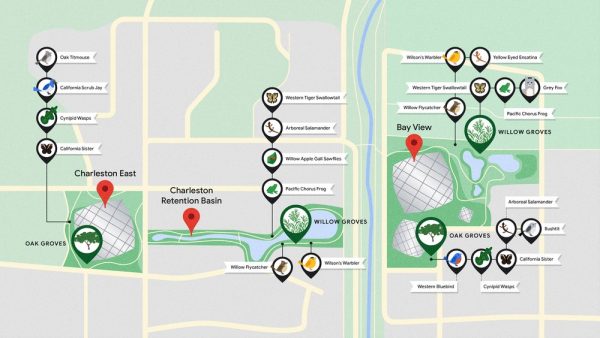Vast oak woodlands punctuated with lush willow groves once stretched from Palo Alto to San Jose and beyond, long before the rise of Silicon Valley.
“Centuries of agricultural intensification and urbanization have transformed these landscapes,” says Erin Beller, Google’s ecology program lead who studied Silicon Valley’s ecological history and restoration potential for her PhD. “We’ve lost over 99% of these valuable native habitats.”
Now, Google’s real estate and ecology teams are working to bring nature back into the built environment — in part, by restoring critical habitats like oak woodlands and willow groves across our Bay Area campuses. The goal is to revive the area’s ecological heritage and bolster the human experience while creating thriving, functional landscapes for a biodiverse constellation of species.
Already, the team has restored over 15 acres on Google’s campuses and in the surrounding urban landscape, in partnership with local NGOs, ecology experts and government agencies. This work includes everything from creating welcoming habitat patches for pollinators like native bees and monarch butterflies to partnering on larger projects like restoring the Charleston Retention Basin.
Thanks to Google’s willow grove restoration initiatives like those around the Charleston Retention Basin and on the Bayview and Charleston East campuses, there are more places for migratory songbirds to rest and find food to replenish their energy en route.
At the Charleston Retention Basin — home to one of the largest willow groves in the region — there are new trails, seats and lookout points so people can immerse themselves in the outdoors and appreciate the biodiversity around them.
In addition to projects in the Bay Area, Google’s ecology team has urban greening projects in the works across several of the company’s campuses, including in the heart of London, Munich and New York.
“Nature and people should be able to flourish together in the campuses and communities that Google calls home,” says Beller.
This work is part of a bigger global movement. The idea that nature in cities is crucial for both people and wildlife is taking root, and high-profile projects like London’s National Park City to The High Line of New York have brought it into the public consciousness.
“We know that access to nature has profound benefits for human health and wellbeing,” says Kate Turpin, director of design performance for Google’s real estate development team. “It can be a place of refuge, from a hot day or the busy pace of working life.”



